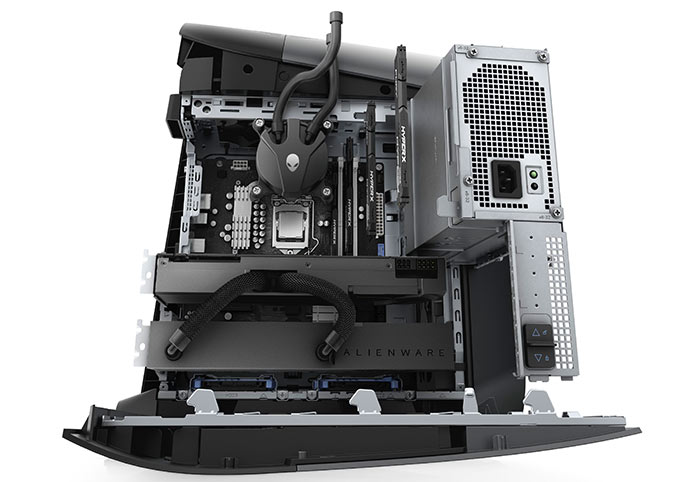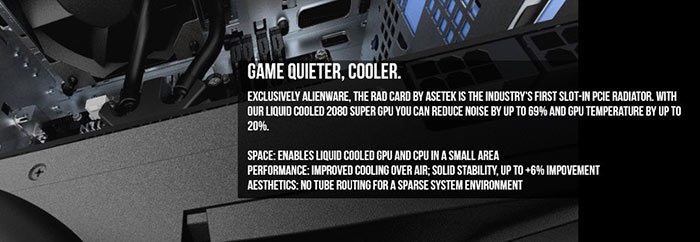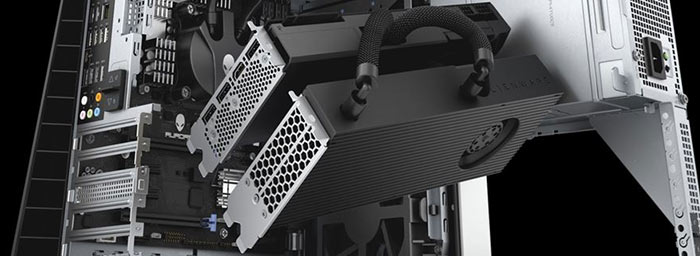Asetek has announced its new Rad Card, claimed to be the world's "first slot-in PCIe radiator card." The company is touting the Rad Card as an attractive solution to bring liquid cooled GPUs to space constrained PCs. It has certainly earned a good design win, straight out of the gate, as the latest Alienware Aurora R11 gaming PC features an optional Nvidia GeForce RTX 2080 Super cooled by the Rad Card.
In its blog post, Asetek sums up the appeal of the Rad Card quite simply. "Space concerns are a real issue for PC manufacturers, leaving GPU air cooling as the only option, until now," it says. "Asetek took this challenge head-on, innovating a new approach to radiator technology that reimagines the shape and location of the radiator. The Asetek Rad Card GPU Cooler fits into your motherboard’s PCIe slot, just like any other add-in card."

Asetek doesn't provide any cooling performance claims in its announcement post, it only says that the Rad Card offers superior cooling over an air cooled GPU, with less tube/cable clutter, ensuring greater GPU stability and limiting thermal throttling. However, if you head on over to the official Rad Card product page or Alienware's blog about the new Aurora R11 PC there are a few performance stats shared.

In the Alienware Aurora R11 PC with Nvidia GeForce RTX 2080 Super graphics card, the GPU is claimed to run about 20 per cent cooler and 69 per cent quieter than an air cooled alternative.

You can't buy an Asetek Rad Card separately at this time. Asetek asks that you enquire about the option with "your favourite System Integrator". However, it hints that there will be some of its OEM partners marketing similar solutions. The Alienware Aurora R11 PC starts at US$979.99 (with a 10th gen Core i5, GTX 1650, 8GB RAM, 1TB HDD) but to customise it with a GeForce RTX 2080 Super and Rad Card you will have to add $800 - and then spend more to create a balanced gaming system.













